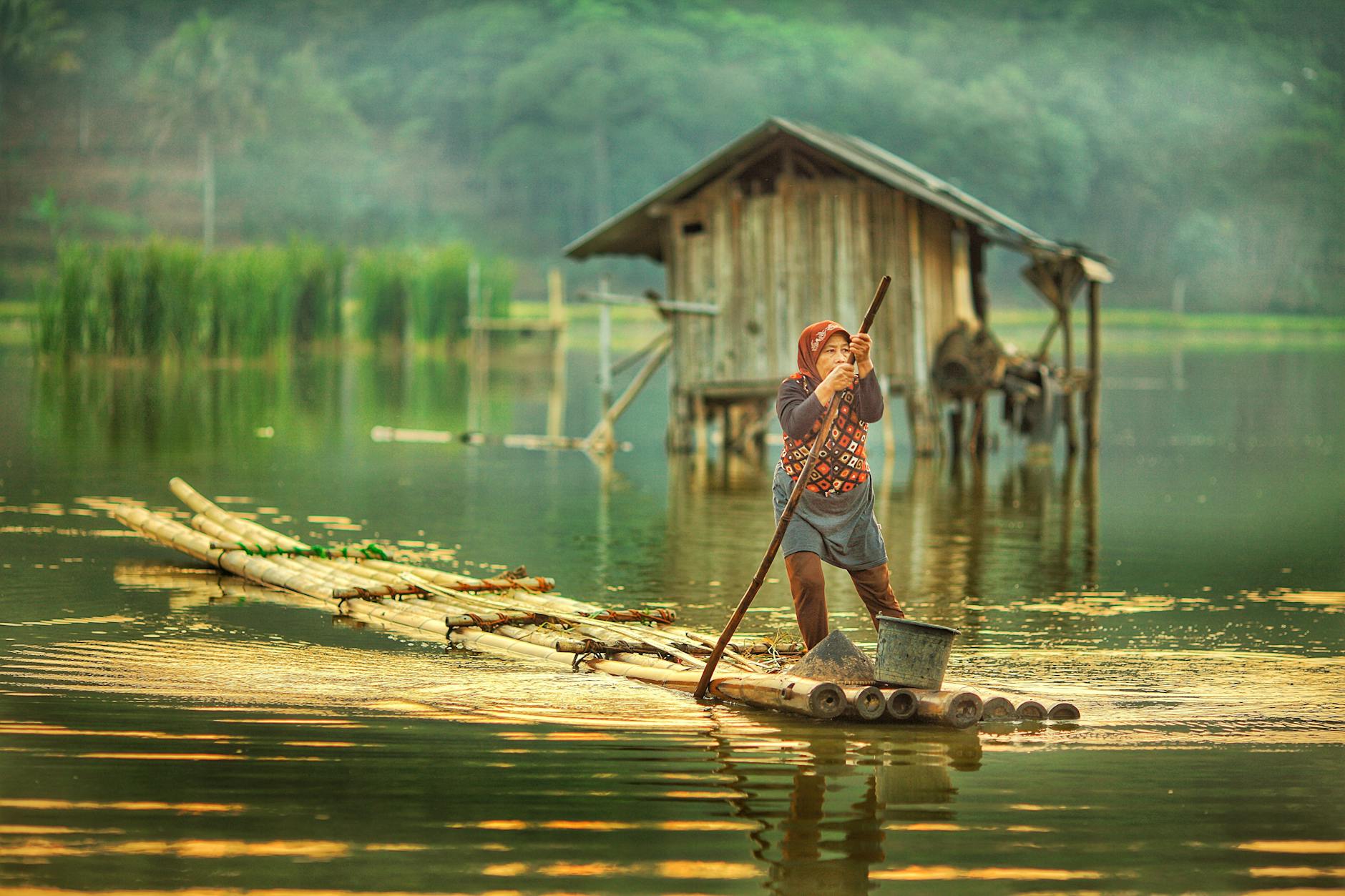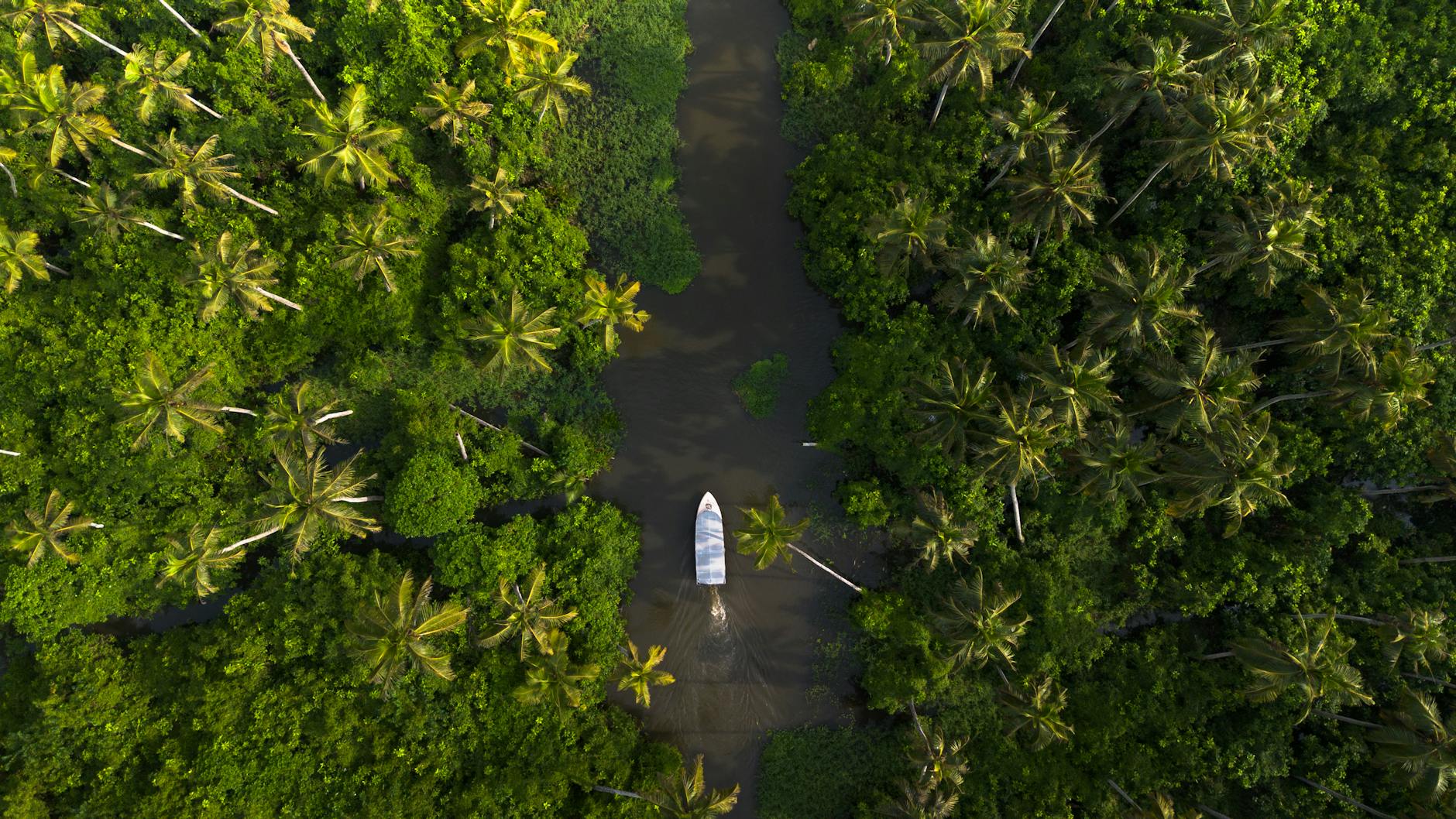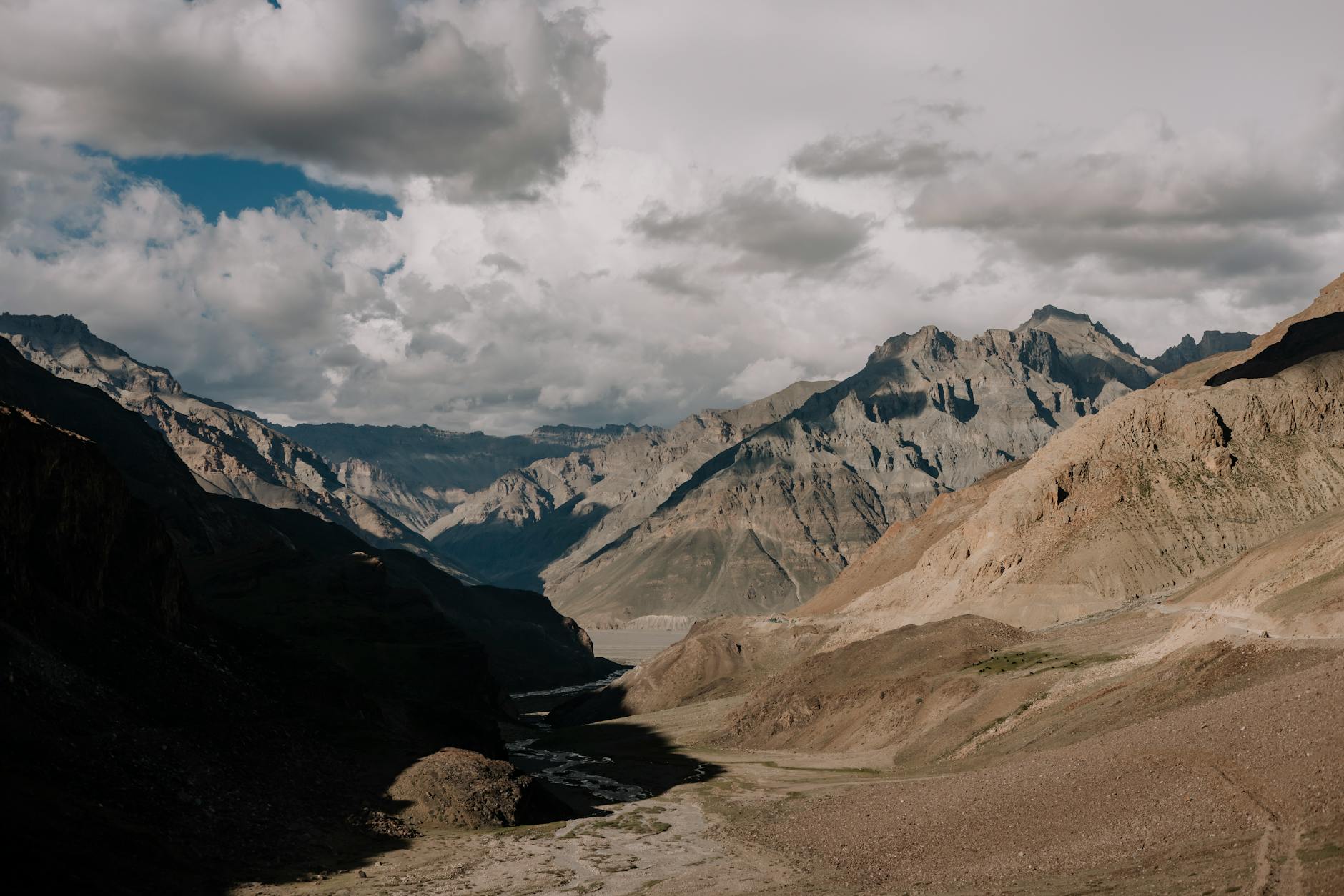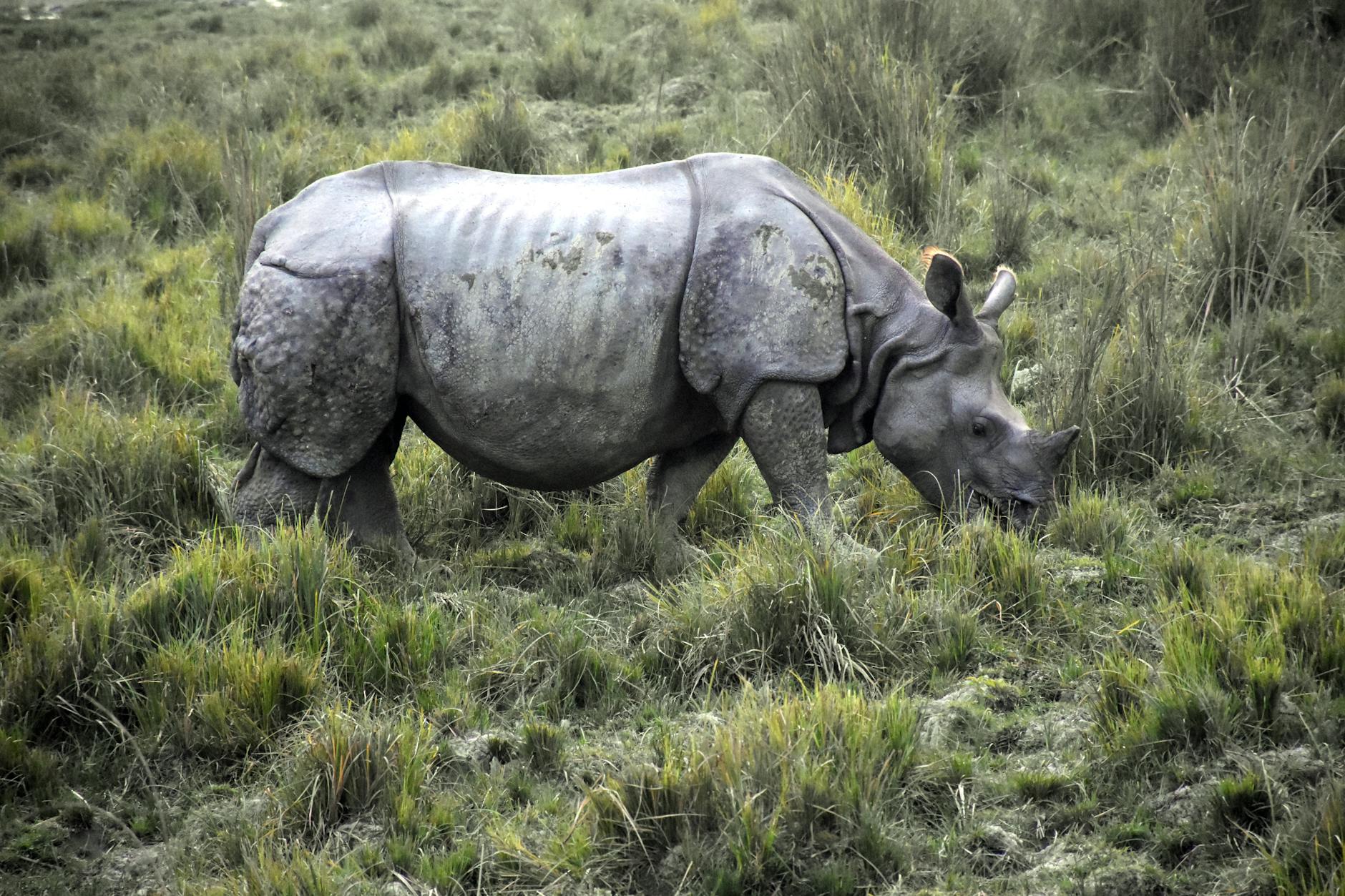Ever stood at the edge of a tea plantation in Munnar as the morning mist rolls in, and thought, “This is what peace feels like”? That’s eco-tourism in India. India’s Top 8 Eco-Tourism Destinations are raw, soul-stirring, and surprisingly accessible.
While Goa’s beaches get the Instagram glory, India’s ecological wonders offer something deeper: authentic experiences where conservation and cultural immersion happen naturally.
From the floating meadows of Loktak Lake to the ancient forest corridors of the Western Ghats, India’s top eco-tourism destinations represent the perfect marriage of environmental responsibility and unforgettable adventure.
But here’s what nobody tells you about these India’s Top 8 Eco-Tourism Destinations– they’re changing how we understand sustainable travel in ways that might make you rethink your next vacation entirely.
What Makes India a Premier Eco-Tourism Destination

A. Biodiversity hotspots and unique ecosystems
India isn’t just another dot on the eco-tourism map—it’s a full-blown paradise of biodiversity. With 4 of the world’s 36 biodiversity hotspots calling India home, we’re talking about a country that packs more natural variety than most continents.
From the misty Western Ghats with their rain-soaked forests to the towering Himalayas where snow leopards roam free, the natural diversity here is mind-blowing. The country hosts over 45,000 plant species and 91,000 animal species—about 7% of all recorded species worldwide.
What makes this even more special? The ecosystems here don’t exist in isolation. They blend and transition into each other, creating unique habitats you won’t find anywhere else on Earth.
B. Sustainable travel initiatives across the country
India isn’t just sitting on its biodiversity treasure—it’s actively protecting it through smart eco-tourism approaches.
Local communities across the country are stepping up big time. In places like Sikkim, entire villages have transformed into eco-tourism hubs where visitors stay in homestays powered by solar energy and eat organic, locally-grown food.
The government’s “Incredible India” campaign now heavily promotes responsible tourism practices. Many national parks have strict visitor quotas and vehicle limitations to minimize environmental impact.
C. Balance of natural wonders and cultural heritage
The magic of eco-tourism in India? It’s never just about the trees and tigers.
Every natural wonder comes wrapped in layers of cultural significance. The sacred groves of the Western Ghats aren’t just biodiversity hotspots—they’re also ancient sites of worship protected by local communities for centuries.
When you trek through the pine forests of Uttarakhand, you’re also walking through living mythology. The mountains, rivers, and forests of India have shaped its art, music, spirituality, and daily life for thousands of years.
This unique blend means travelers don’t have to choose between cultural immersion and ecological exploration—in India, they’re two sides of the same extraordinary coin.
Exploring Kerala’s Backwaters: Sustainable Waterways

A. Houseboat experiences with minimal environmental impact
Ever wondered how a floating hotel powered by the sun feels? Kerala’s eco-friendly houseboats are exactly that. These traditional kettuvallams now come with solar panels, battery-operated engines, and waste management systems that keep those stunning backwaters pristine.
The best part? You’re not just getting gorgeous views – you’re supporting operators who actually care. Most eco-houseboats use biodegradable cleaning products and serve food on banana leaves instead of disposable plates. Smart, right?
For a full backwater experience without the guilt trip, visit 5 senses tours.
B. Local village encounters and authentic cuisine
Nothing beats pulling up to a small village where your lunch was harvested that morning. The backwater communities welcome visitors with genuine warmth that no five-star hotel can match.
Stop at waterside homes where families prepare traditional Kerala meals – think karimeen fish wrapped in banana leaves and steamed, or spicy duck curry that’ll make your taste buds dance. The coconut-infused everything is just a bonus.
Many villages offer cooking classes where you’ll pound spices on traditional grinding stones and learn recipes passed down for generations. Trust me, your homemade sambar will never taste the same again.
C. Bird watching opportunities in pristine wetlands
The backwaters are basically bird paradise. Grab your binoculars (or just use your eyes) and spot kingfishers flashing electric blue against green palms, or white egrets stepping delicately through the shallows.
Dawn boat rides bring you face to face with cormorants drying their wings, snake birds diving for breakfast, and if you’re lucky, the elusive Malabar Trogon with its crimson belly.
Kumarakom Bird Sanctuary houses over 180 species, but honestly? The entire backwater system is one giant bird haven. Even amateur spotters leave with memory cards full of incredible shots.
D. Community-based tourism supporting local livelihoods
Your tourism dollars go directly into local pockets when you choose community-based experiences. Villages like Kumbalangi have transformed their economies through responsible tourism while preserving their way of life.
Try your hand at net fishing alongside locals, or watch artisans weave coconut fiber into coir products. Many communities run cultural programs showcasing traditional arts like Kathakali or Mohiniyattam dance forms.
Women’s cooperatives sell handmade souvenirs and spices – perfect gifts that actually help someone. The backwaters aren’t just stunning to look at – they’re living, working communities that have found a brilliant balance between tradition and tourism.
Himalayan Eco-Retreats: Pristine Mountain Sanctuaries

A. Responsible trekking in Uttarakhand’s Valley of Flowers
The Valley of Flowers isn’t just another pretty spot in the mountains. It’s a UNESCO World Heritage site that’ll knock your socks off with over 500 wild flower species painting the landscape in impossible colors.
Want the real magic? Visit between July and September. The meadows explode with color, and you might spot a bharal (blue sheep) if you’re lucky.
But here’s the deal – this paradise is fragile. Stick to marked trails, carry back every wrapper and bottle, and don’t even think about plucking flowers (seriously, don’t be that person).
Several local groups offer guided treks with trained locals who know exactly how to minimize your footprint while maximizing your experience.
B. Homestays that preserve traditional architecture
The Himalayan homestays aren’t just places to crash – they’re living museums of mountain architecture.
In villages like Malana and Nag Tibba, families have transformed generations-old wooden homes into cozy retreats without compromising their cultural integrity. These structures use local pine, cedar, and stone with traditional joinery techniques that have weathered earthquakes for centuries.
The best part? Your money goes directly to families who maintain these architectural treasures. Many homestays serve local cuisine from kitchen gardens, use solar heating, and practice rainwater harvesting.
C. Conservation efforts and wildlife protection programs
The Himalayas face serious threats – from climate change to human encroachment. But local communities aren’t sitting around waiting for disaster.
In Uttarakhand, village-led initiatives like the Himal Prakriti conservation program have created buffer zones around protected areas, reducing human-wildlife conflict dramatically. Several communities have established no-plastic zones and waste management systems that would put some cities to shame.
Wildlife monitoring programs invite visitors to contribute to snow leopard and Himalayan black bear conservation through citizen science projects. Your visit actually helps fund these efforts directly when you stay with responsible operators.
For a wildlife tour of Bandipur, visit Bandipur wildlife Experience.
Sundarbans: World’s Largest Mangrove Forest

Tiger conservation and responsible wildlife viewing
The Sundarbans isn’t just any mangrove forest – it’s tiger territory. Home to the famous Bengal tigers that have adapted to swimming in saltwater (yeah, you read that right), this UNESCO World Heritage site offers wildlife viewing with a conscience.
Want to spot a tiger? Join a responsible safari that maintains proper distance and follows strict guidelines. The best operators limit group sizes and avoid disturbing natural behaviors. Remember those documentaries where boats chase animals? That doesn’t fly here.
Your chances of spotting a tiger? Pretty slim, honestly. But that’s actually good news – it means these endangered cats still have places to hide from humans.
Boat safaris with expert naturalist guides
Nothing beats gliding through narrow waterways with someone who can tell a pugmark from a random depression in the mud. Local guides here are next-level – many grew up in these forests and can spot camouflaged creatures you’d completely miss.
These experts explain the complex ecosystem while pointing out crocodiles sunning themselves, deer peeking through foliage, and if you’re lucky, the elusive tiger.
Morning safaris offer the best wildlife viewing, but sunset trips? Pure magic as the mangroves transform into silhouettes against orange skies.
Supporting local communities displaced by climate change
Rising sea levels are no joke here. Many villagers have already lost homes to erosion and increasingly powerful cyclones.
When you stay at community-run accommodations, your money directly helps families adapt. Several villages now offer homestays where you’ll eat fresh-caught fish curry while hearing firsthand about life in this challenging environment.
Mangrove restoration projects visitors can participate in
Roll up your sleeves! Several NGOs run single-day planting programs where you’ll learn proper mangrove planting techniques from locals. These trees are critical – they’re natural storm barriers, carbon sinks, and wildlife nurseries all in one.
For something longer-term, week-long volunteer programs combine restoration work with wildlife monitoring. Nothing beats the satisfaction of knowing the seedling you planted might someday shelter tiger cubs.
Spiti Valley: Cold Desert Ecology

Ancient Buddhist Culture and Environmental Stewardship
Want to see a place where environmentalism isn’t a new trend but a 1,000-year-old way of life? Spiti Valley’s Buddhist traditions have seamlessly blended spiritual practice with environmental care for centuries.
Monasteries like Ki, Tabo, and Dhankar aren’t just architectural marvels—they’re living examples of sustainable wisdom. Monks practice water conservation techniques passed down through generations, perfectly adapted to this high-altitude desert environment.
The local Spitian people follow Buddhist principles of minimal harm, which translates to careful resource use and deep respect for all living beings. Their traditional agricultural methods work with—not against—the harsh mountain conditions.
Snow Leopard Conservation Initiatives
The elusive “ghost of the mountains” roams these valleys, and locals are its most dedicated protectors. Community-led conservation efforts have transformed former hunters into wildlife guardians.
The Snow Leopard Conservancy partners with village committees to monitor these endangered cats using camera traps. Tourists can join responsible tracking expeditions that fund conservation while maintaining strict viewing protocols to minimize wildlife stress.
Visit between January and March for the best chance to spot these majestic creatures while supporting local conservation efforts.
Homestays with Solar Power and Sustainable Amenities
Forget luxury hotels with wasteful practices. In Spiti, you’ll sleep under woolen blankets in family homes powered by the abundant mountain sun.
Most homestays now feature solar panels—sometimes the only electricity source for miles. Your hot water comes courtesy of solar heaters, and meals are prepared using locally-grown organic ingredients.
Families teach visitors traditional conservation practices: composting food waste, reusing water, and efficient cooking methods using minimal fuel. It’s sustainability born of necessity, not trend.
Discover Ladakh cold desert over 6 days at 5 Senses Tours.
Kaziranga National Park: Protecting the One-Horned Rhino

Ethical safari experiences that support conservation
Ever wondered what it’s like to see a real-life armored tank with a horn? That’s the one-horned rhino for you. Kaziranga doesn’t just show you these magnificent beasts – it protects them.
The park runs jeep and elephant safaris that actually fund anti-poaching efforts. Your tourism dollars directly support the rangers who risk their lives protecting these endangered animals. Pretty cool, right?
Unlike typical wildlife tours, Kaziranga’s safaris maintain strict viewing distances. They limit vehicle numbers too, so you’re not part of some noisy convoy stressing out the animals. The guides are local experts who’ve spent their lives studying these ecosystems – not script-readers reciting facts they memorized yesterday.
Cultural exchanges with local tribal communities
The Mising, Karbi, and Assamese communities have lived alongside Kaziranga’s wildlife for generations. Many eco-lodges now partner with these villages, creating authentic cultural experiences that benefit local economies.
Join a traditional Bihu dance performance, or try your hand at making pithas (rice cakes) with local families. These aren’t tourist traps – they’re genuine cultural exchanges where families share their traditions and receive fair compensation.
Flood management and adaptation strategies
Kaziranga faces a unique challenge – annual monsoon floods that transform the landscape. The park has developed ingenious ways to work with nature rather than against it.
Artificial highlands now provide refuge for animals during flooding, while carefully managed controlled burns prevent invasive species from taking over. The park’s adaptation strategies have become a model for conservation areas worldwide facing climate change challenges.
Volunteer opportunities for wildlife monitoring
Want to do more than just visit? Kaziranga offers programs where you can contribute to conservation science. Volunteers assist researchers in camera trap monitoring, habitat assessment, and community education initiatives.
These aren’t glamorous photo-ops – expect early mornings, basic accommodations, and real work. But you’ll leave with conservation skills and the satisfaction of making a tangible difference in protecting one of the world’s most successful conservation stories.
For a blog on not to be missed beach destinations of India please visit Great Holiday Ideas.
Andaman Islands: Marine Conservation Havens

Coral Reef Restoration and Monitoring Programs
The Andaman Islands aren’t just postcard-perfect beaches and azure waters. They’re living laboratories where marine conservation comes alive. Dive beneath the surface and you’ll find passionate teams working tirelessly on coral nurseries, painstakingly attaching fragments to underwater structures, nurturing them until they’re ready to be transplanted to degraded reef areas.
Want to be more than just a tourist? Several eco-resorts partner with marine biologists offering “coral gardening” experiences. You’ll learn to identify coral species, understand their growth patterns, and actually contribute to restoration efforts during your stay.
The monitoring programs here are next-level innovative. Using underwater drones and 3D mapping technology, conservationists track reef health with minimal human interference. Some resorts even invite guests to participate in citizen science projects, collecting valuable data while exploring the vibrant underwater world.
Indigenous Cultural Preservation and Respectful Engagement
The indigenous tribes of Andaman, particularly the Jarawa and Great Andamanese, maintain cultures dating back thousands of years. Responsible eco-tourism here means learning about these communities without intruding on their space.
Several community-led initiatives now offer cultural exchanges on the tribes’ own terms. These programs are designed by tribal elders themselves, sharing only what they wish to share while protecting sacred knowledge.
Sustainable Diving and Snorkeling Practices
Gone are the days of grabbing corals for selfies. Eco-certified dive operators now enforce strict no-touch policies and perfect buoyancy control.
Many operators use electric boats instead of traditional fuel engines, cutting down noise pollution that affects marine life communication. They’ll teach you how to observe without disturbing – floating horizontally above reefs rather than kicking around vertically.
The best part? Several diving sites now limit daily visitors, preserving these underwater wonders for generations to come.
For exploring India on a Royal Enfield motorcycle, please visit 5 Senses Motorcycle Tours.
Practical Tips for Responsible Eco-Tourism in India

A. Best seasons for minimal environmental impact
The sweet spot for eco-tourism in India? October to March. This dry period means less mud on trails and reduced erosion from your boots. But here’s what most tourists miss: shoulder seasons (September and April) offer lower crowds and give popular destinations a chance to breathe.
Northern spots like Spiti Valley and Himalayan retreats? June-September works best. The locals are prepared for visitors then, rather than struggling to accommodate off-season travelers with limited resources.
Skip monsoon visits (June-September) to southern destinations like Kerala backwaters. Heavy rains can turn your “eco-friendly” trek into a nightmare for fragile ecosystems.
B. Packing essentials for sustainable travel
Ditch single-use anything when packing for Indian eco-destinations. Your basics:
- Reusable water bottle with filter
- Cloth shopping bags
- Metal straw and cutlery set
- Biodegradable toiletries (especially important near water sources)
- Solar charger for electronics
The game-changer most travelers miss? A good quality headlamp. It reduces the need for disposable flashlights and batteries that often end up in remote landfills.
C. Certifications and eco-labels to look for when booking
Not all “eco” labels are created equal in India. The trustworthy ones:
- TOFT PUG Certification (wildlife tourism)
- India’s Ministry of Tourism “Eco” rating
- Responsible Tourism Classification by Kerala Tourism
- Green Leaf Certification for accommodation
Avoid places that just throw “eco” in their name without credentials. Many legitimate eco-lodges display their certification proudly on websites and premises.
D. Supporting authentic local crafts and sustainable souvenirs
The rule of thumb? If it came from nature, leave it there. Instead:
- Buy directly from artisans (middlemen often take 70% of profits)
- Look for GI-tagged products (Geographical Indication ensures authenticity)
- Handmade textiles use less energy than factory-made alternatives
- Traditional crafts often use natural dyes and sustainable materials
The best souvenir from Kaziranga isn’t a random trinket, but a handwoven bamboo item made by local communities participating in conservation.
E. Respectful cultural etiquette while visiting sacred natural sites
Many of India’s natural wonders double as spiritual sites. The unwritten rules:
- Remove shoes when instructed (even if the ground looks dirty)
- Ask before photographing people or ceremonies
- Women should carry a scarf to cover heads when needed
- Walk clockwise around sacred trees, mountains or water bodies
- Avoid touching offerings or religious items
The most overlooked tip? Learn a few words in the local language. “Namaste” works in many regions, but “Vanakkam” in Tamil Nadu or “Khublei” in Meghalaya shows genuine respect for local culture intertwined with natural landscapes.

India’s abundant natural landscapes offer eco-tourists a remarkable blend of biodiversity and cultural richness. From Kerala’s serene backwaters to the majestic Himalayan retreats, the mangrove forests of Sundarbans to Spiti Valley’s unique cold desert ecosystem, each destination provides a distinctive window into India’s ecological heritage while supporting conservation efforts.
As you plan your eco-adventure in India, remember that responsible tourism is key to preserving these treasures for future generations. By choosing sustainable accommodations, respecting wildlife boundaries, engaging with local communities, and minimizing your environmental footprint, you become part of the solution rather than the problem. India’s eco-tourism destinations await those who seek not just to witness nature’s wonders, but to protect them.
For an immersive culture walk in India, please visit 5 Senses Walks.
Discover more from Great Holiday Ideas
Subscribe to get the latest posts sent to your email.